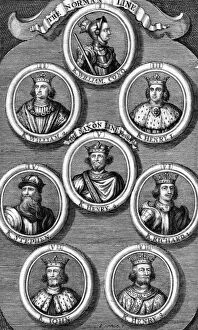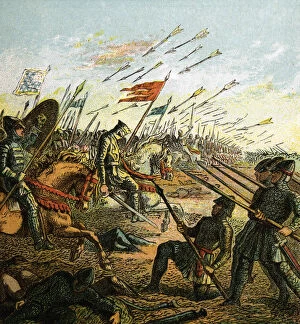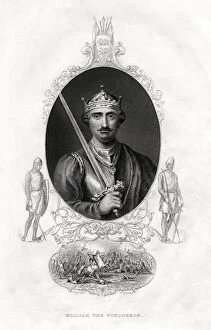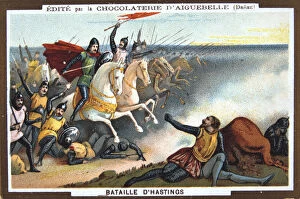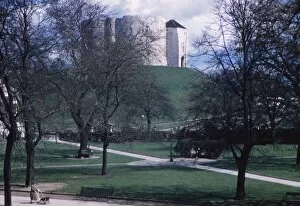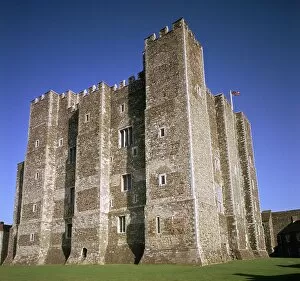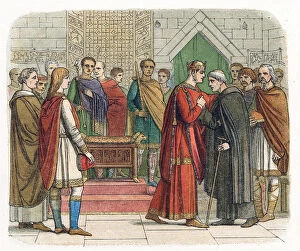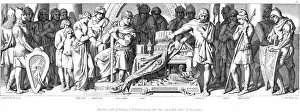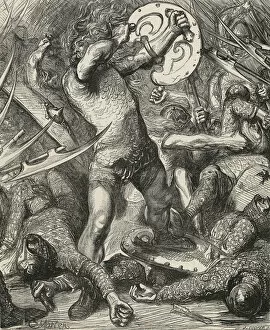William Of Normandy Collection (page 4)
William of Normandy, also known as William the Conqueror, was a prominent figure in medieval history
For sale as Licensed Images
Choose your image, Select your licence and Download the media
William of Normandy, also known as William the Conqueror, was a prominent figure in medieval history. He is depicted in various artworks and historical records that capture significant moments of his life. In the Bayeux Tapestry, created in the late 11th century, we see a feast scene where William's power and influence are showcased. This intricate embroidery highlights his role as a conqueror and ruler. Another representation of King William can be seen on his seal from 1870. The seal symbolizes his authority and sovereignty over England after defeating Harold II at the Battle of Hastings in 1066. James William Edmund Doyle's painting from the 19th century portrays Harold II, the last Anglo-Saxon king of England, being brought before William after their fateful encounter on the battlefield. It captures the pivotal moment when power shifted from one ruler to another. The illustration depicting William I's death in L'Univers Illustre showcases an engraving that immortalizes this significant event. It serves as a reminder of his impactful reign and legacy. A silver penny with an image of William on its obverse provides us with a tangible artifact from this era. Coins like these were used during his rule and serve as evidence of economic stability under his leadership. The Battle of Hastings is widely recognized as one of history's most crucial conflicts. An unknown artist captured this event in two different works: one dating back to 1835 and another to 1890. These depictions showcase both sides engaged in fierce combat for control over England. A statue erected in Falaise pays tribute to William's conquests by honoring him with a lasting monument. This sculpture stands tall even today, reminding visitors about his enduring impact on English history. William Bromley's artwork titled "The Battle of Hastings" depicts this monumental clash between Norman invaders led by William himself against Harold II's forces defending their homeland—an essential piece capturing this turning point in history.

